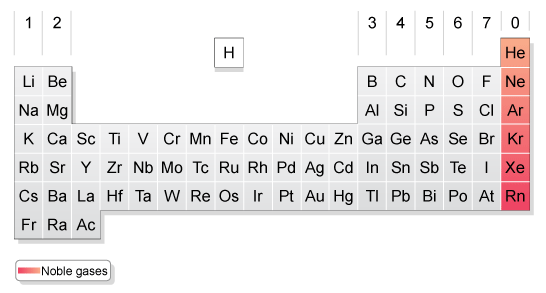NOBLE GASES
The elements
The noble gas elements of group 18 were long considered as chemically inert with their closed-shell electron configurations. Though, in the year 1962 Bartlett noted that the ionization energy of xenon was identical to that of O2, and through reaction with PtF6 attempted to arrange the compound analogous to [O2]+[PtF6]-. He acquire a complex result consisting of the ion [XeF]+ (with a valence structure 1 isoelectronic to dihalogen molecules) rather than the supposed Xe+. Several compounds of xenon are now known, mainly with F and O, and some of krypton.

The gases are not usually abundant on Earth, even though argon (formed through the radioactive decay of 40K) forms about 1 mol % of the atmosphere, and helium (created through radioactive decay of uranium and thorium) take place in natural gas. Radon is radioactive, 222Rn along with a half-life of 3.8 days also being created through radioactive decay from 238U. The boiling points of the elements depict the trend supposed from van der Waals' forces, which of helium (4.2 K) being the lowest of any substance. Helium is also different like it does not solidify apart from under pressure; the remaining elements create monatomic solids with close-packed structures. Liquid helium is employed for preserving extremely low temperatures (example for superconducting magnets), argon like in some metallurgical processes an inert gas and in gas discharge tubes all the elements.